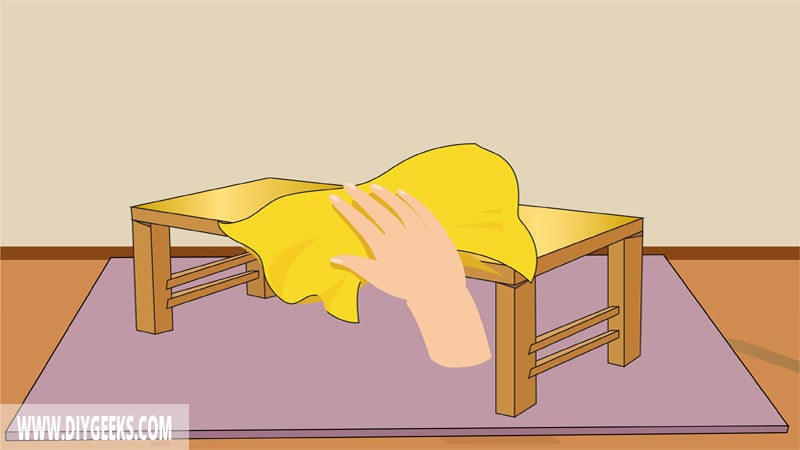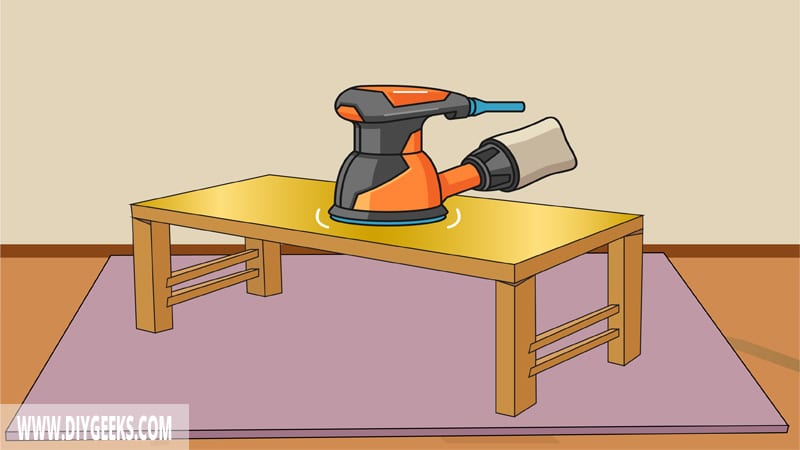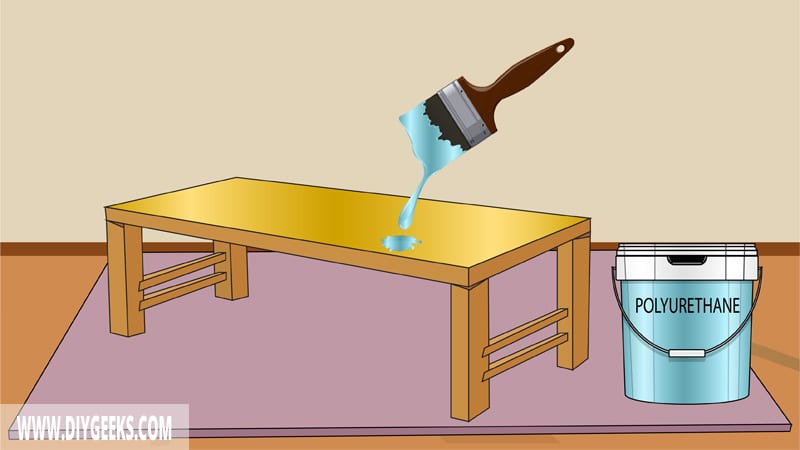You can apply polyurethane over enamel paint to increase the durability of the finish by protecting it from water, moisture, scratches, and other damage.
To apply polyurethane over enamel paint, prepare the workspace, clean the finish, sand the finish, and apply the polyurethane.
Polyurethane is a topical topcoat, meaning it doesn’t need to penetrate the surface to stick. So, it will stick to the glossy layer of enamel paint.
What Type of Polyurethane Can You Use Over Enamel Paint?
You can use water-based, oil-based, and exterior-based polyurethane over enamel paint. But, the oil-based polyurethane is more compatible as both use oil as their solvent.
You can also use water-based polyurethane, but the paint must be fully dry (cured) before you apply it. If it isn’t, the finish will turn sticky (or tacky) as the solvent of the water-based poly (water) and enamel (oil) aren’t compatible and don’t mix well.
You can use exterior polyurethane for outdoor enamel painted surfaces as it’s formulated with extra additives that make it more durable and resistant to outdoor elements.
How To Apply Polyurethane Over Enamel Paint?
To apply polyurethane over enamel paint do the following.
- Prepare the Workspace.
- Clean the Finish.
- Sand the Finish.
- Apply Polyurethane.
The tools you need for this project are listed below.
- Tack Cloth or Rags
- Fine-Grit Sandpaper
- Bristled Paintbrush
- Drop Sheet
- Polishing Compound (Optional)
1. Prepare the Workspace

Prep the workspace by covering nearby objects and furniture and laying a drop sheet over the floor. This prevents paint spills on the floor.
2. Clean the Finish

Clean the finish to remove dust and filth. The dust will prevent the sealer from sticking and a smooth finish if you don’t clean it. Polyurethane has a colorless (transparent) finish and will highlight all imperfections on the surface.
To clean the finish do the following things.
- Use warm soapy water or rubbing alcohol.
- Damp a clean rag with warm soapy water.
- Wipe the surface with the dampened rag.
- Wait 5 minutes.
- Remove the solvent residue from the coating using a clean rag.
3. Sand the Finish

Sand the enamel paint to remove imperfections, remove its glossy layer, and even out the finish by removing bumps.
To sand enamel paint, use fine-grit sandpaper (220-grit). Sand lightly as you need to smooth the surface, not remove the entire coating.
Remove the dust and re-clean the surface after sanding.
4. Apply Polyurethane

You can use water-based, oil-based, or exterior polyurethane over enamel paint, but oil-based or exterior polyurethane works better.
If the sealer is too thick, thin it. To thin oil-based polyurethane, use mineral spirits and thin it in a ratio of 4:1 (4 parts poly, 1 part thinner).
To apply polyurethane do the following things.
- Use a paintbrush, roller, or sprayer.
- Apply 3 coats of polyurethane over enamel paint.
- Wait until one coat dries before applying the next one.
- Allow the finish to fully dry (cure) before using it.
The sealer will produce a glossy clear coat, protecting the enamel paint from moisture, water, and scratches, and improving its durability so the finish lasts longer.
Note: Since polyurethane has no pigments (it’s colorless) it won’t change the color of the existing finish.
Can You Mix Enamel Paint With Polyurethane?
You can mix enamel paint with oil-based polyurethane, and acrylic enamel paint with water-based polyurethane. Don’t mix normal enamel paint with water-based polyurethane as they use different solvents and don’t mix well.
A mixture of oil-based polyurethane and enamel paint will create a colorful and durable finish. The finish will get the color from the pigments of the paint and the durability from the additives of the polyurethane.
Mixing polyurethane with paints is a common procedure to tint the color shade of its finish. However, use more polyurethane than enamel to get a durable and stable finish.
Don’t mix normal enamel paint with water-based polyurethane as they use different solvents (oil and water). Oil and water have different drying times, so if you mix them, the finish won’t dry properly and will turn sticky.
One part of the finish will dry while the other paint will still be wet. This leads to a cracked paint finish.
Can You Apply Enamel Paint over Polyurethane?
You can apply enamel paint over polyurethane, but you must sand and scuff the finish first. If you apply it directly, the paint won’t stick because polyurethane has a glossy finish that repels liquid, including paint.
Enamel paint must penetrate the surface to stick. But, since polyurethane repels liquid (it doesn’t allow it to penetrate the surface), the paint won’t stick.
Sanding will produce tiny ridges (holes) on the finish that the paint can penetrate into and stick to. But, it won’t last too long.
The best way to apply enamel over a polyurethane coating is to remove the sealer and then apply the paint.


